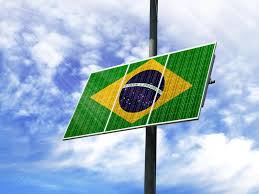Amount is more than double volume negotiated in 2020, survey shows
03/07/2022

The financing for solar power generation in Brazil totaled R$16.2 billion in 2021, according to a survey conducted by Clean Energy Latin America (Cela) with the main financial firms that foster the source.
This is the third consecutive year that the country sets a record for financing in the sector. Of the total resources, R$9.5 billion were destined to distributed generation. The other R$6.6 billion were directed to centralized generation (large power plants).
Cela founder and CEO Camila Ramos has been monitoring the sector since 2019 and says that the amount financed in 2021 increased by more than 100% compared to the previous year, which shows a growing interest of organizations in leveraging renewable power projects.
“The year 2021 more than doubled the amount of financing compared to 2020, which shows that the development of the sector came followed by new operators, fintechs and commercial banks entering the market to finance these projects.”
The executive highlights important institutions in the supply of credit, highlighting development banks, such as BNDES, BNB and Banrisul; multilateral banks, such as the Inter-American Development Bank and the European Investment Bank; cooperative credit systems, such as Sicredi; commercial banks, such as Santander, Bradesco, Banco do Brasil, among others, as well as bonds and fintechs.
In centralized generation, Ms. Ramos highlights a 70% increase in the volume financed due to the maturity of solar projects for the free energy market with many contracts signed “and now we see the construction of these projects.”
In distributed generation, the jump in financing was 2.4 times over 2020. “This is due to the increase in tariffs for the final consumer, new investors entering the sector, and more credit lines from financial firms,” she said.
What may hinder the number of deals in 2022 are the interest rates. Brazil has gone from a historic low to a double-digit rate, which is likely to make loans less attractive. However, the executive argues that, in spite of that, financing will continue attractive.
“When looking for financing, the consumer compares the cost of capital, rate of return, and interest rates. For centralized generation, we are going to see a dominance of development banks, such as BNB and BNDES, and bonds, besides the opportunity of financing in foreign currency. For distributed generation, the interest rate variation is going to be less important if consumers are able to exchange their electricity bill for the portion of the financing,” Ms. Ramos said.
What she has also noticed is that the financing companies are improving other financing conditions, such as extending the terms to fit the consumer’s budget. In addition, 2022 will be the first year of Law 14.300/22, which establishes the legal framework for self-generation of energy, microgeneration, and distributed minigeneration, “which can bring greater comfort for financial firms and can impact the risk spread.”
Source: Valor International
